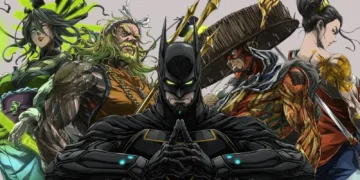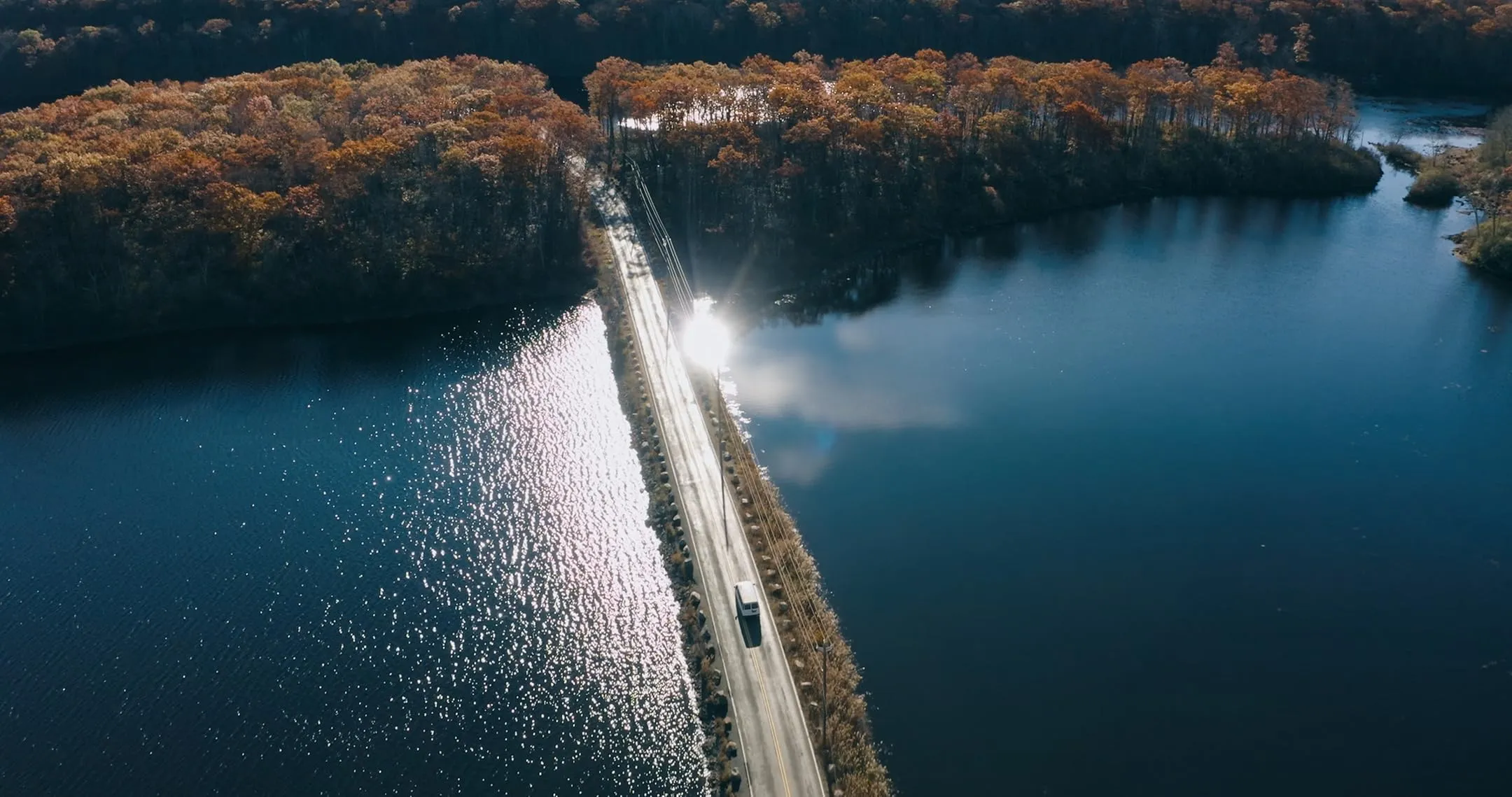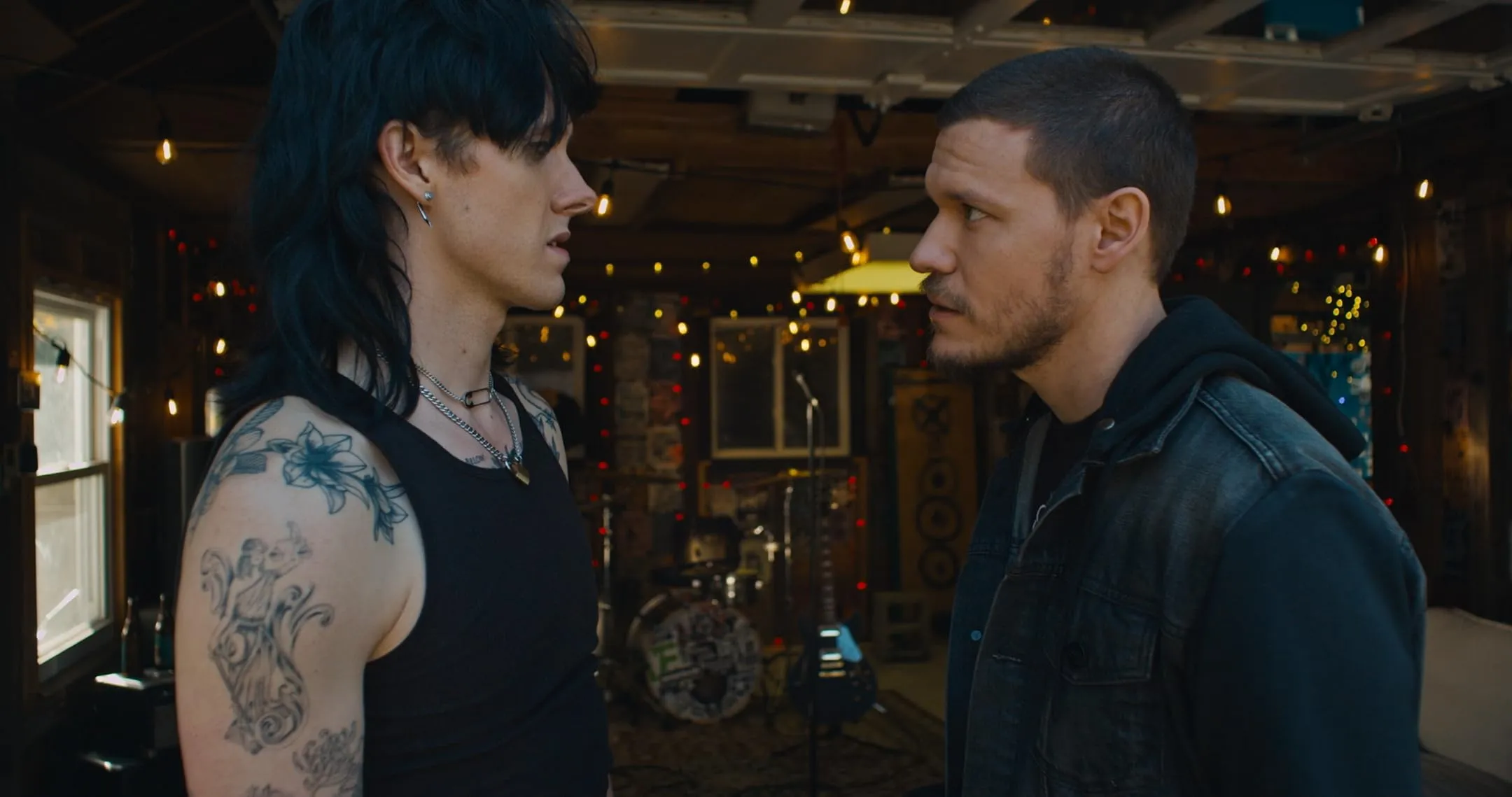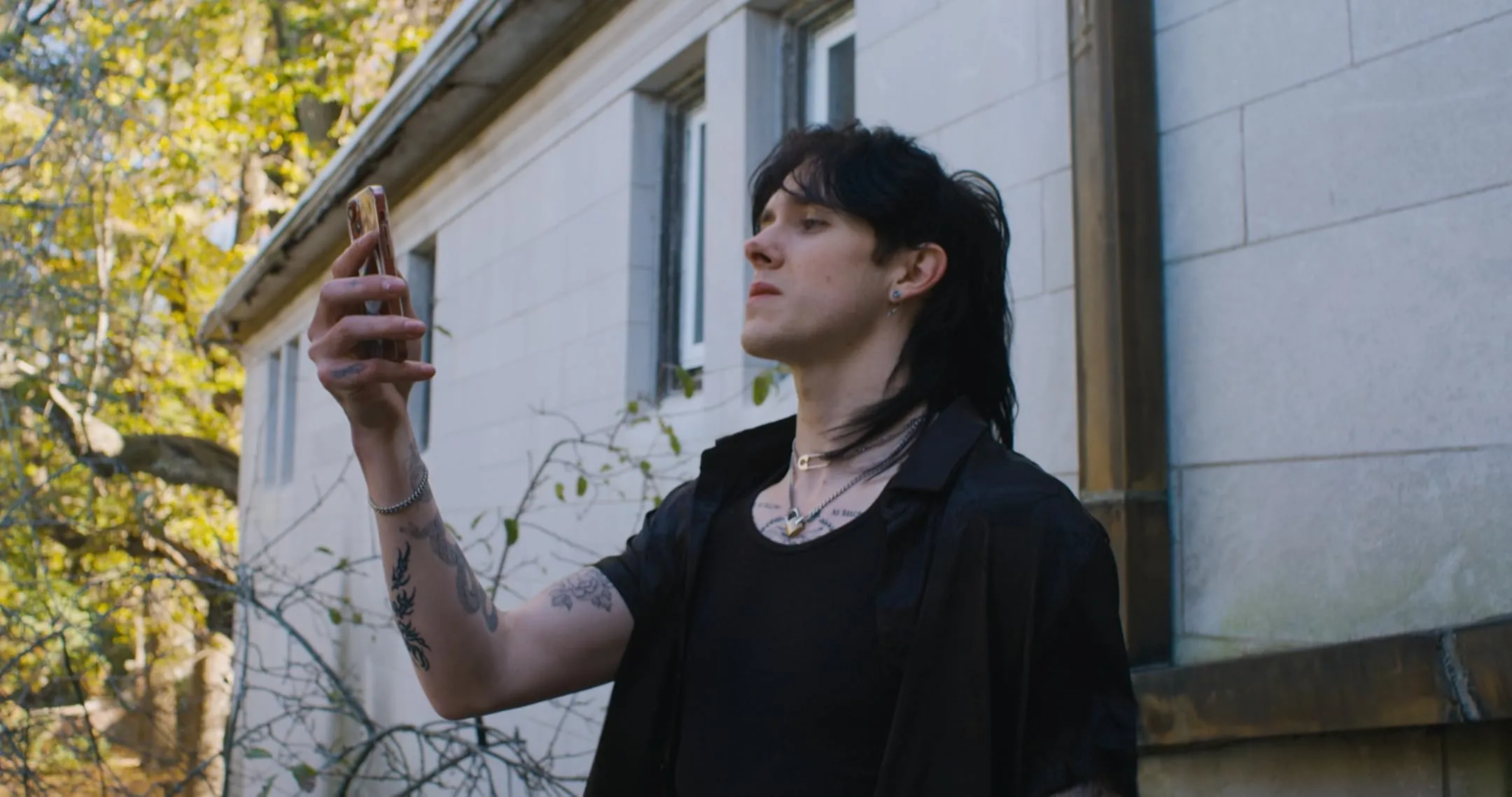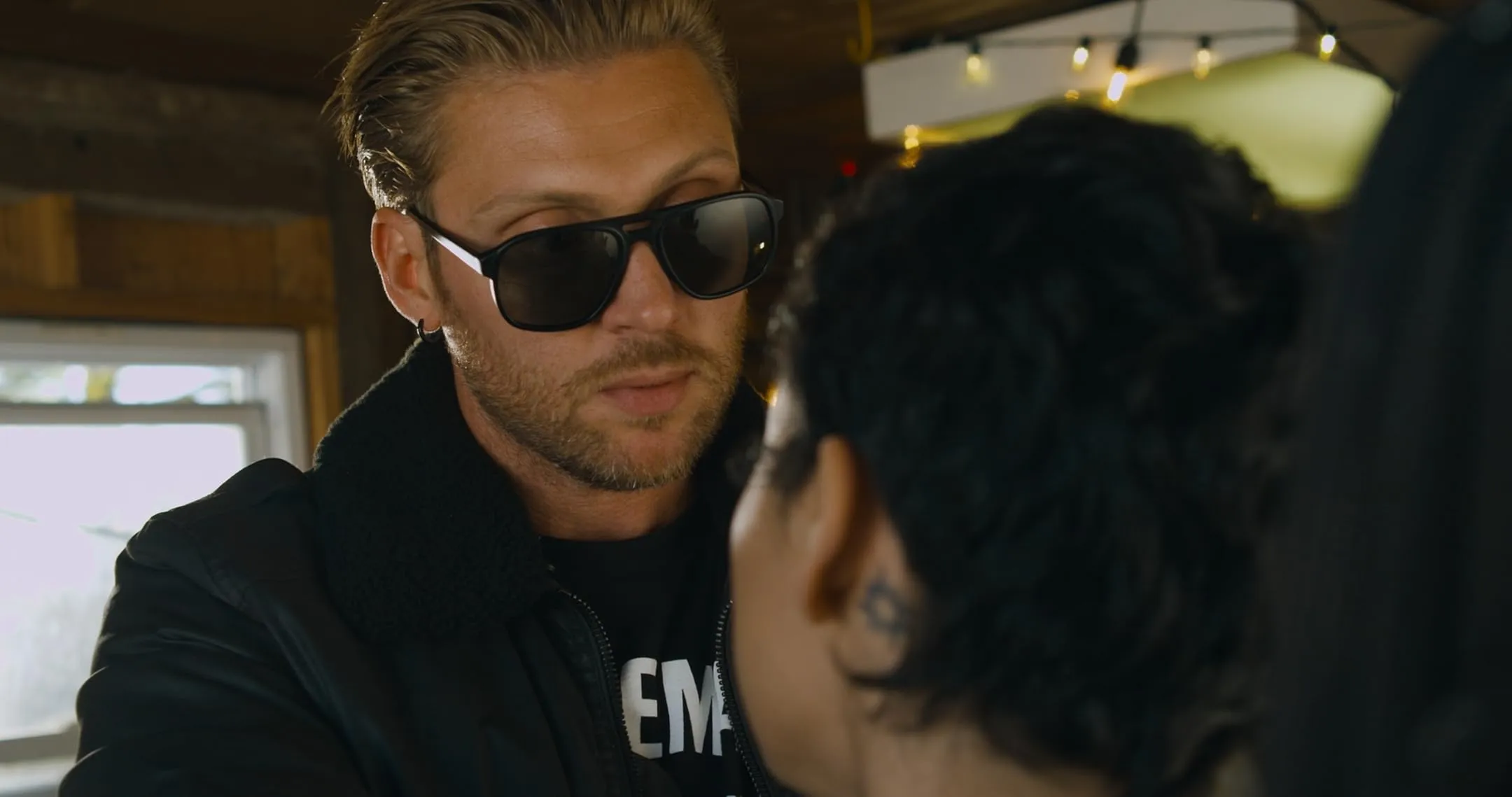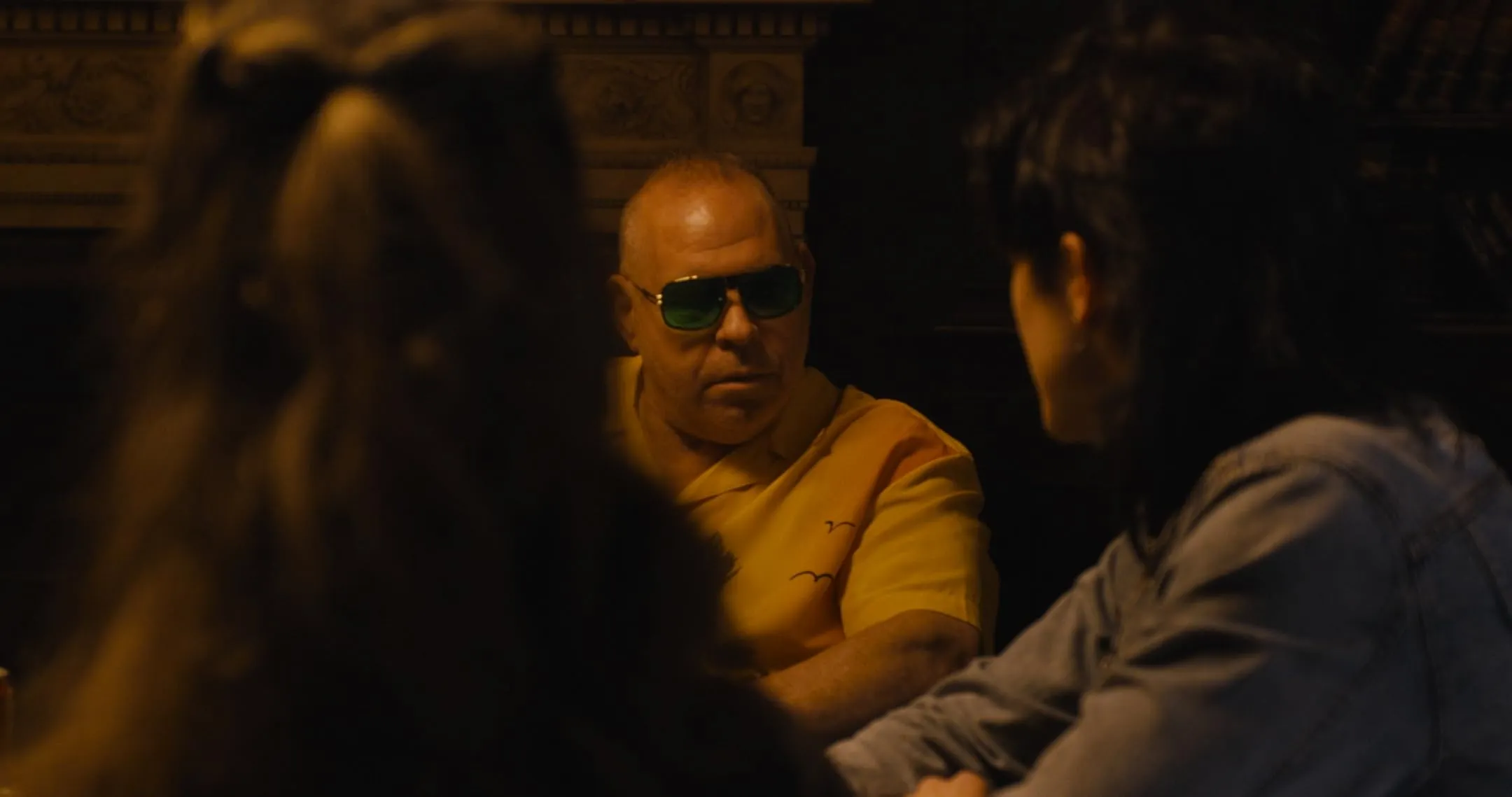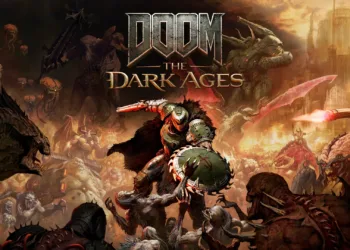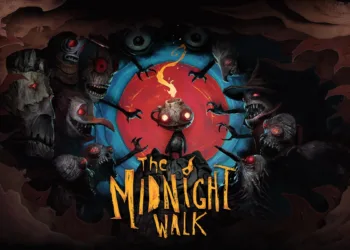The film opens on Jay (Tyler Ivey), frontman of a punk outfit whose last gig feels centuries ago. Their manager, AJ (Darrin Hickok), convenes the crew—John, Menace, Juan—and their partners, Val and Jen, to consider a lifeline: a free music-video shoot funded by a mysterious online suitor. That suitor, Mister Director (Louis Lombardi), awaits them at an isolated Pennsylvania estate draped in peeling elegance.
This isn’t your typical slasher setup; it’s a collision of adolescent ambition and old-world decay. I’m reminded of the outsider spirit in John Carpenter’s early work, where music and menace share the same pulse. Here, the film alternates between rehearsal-room banter and sudden dips into shadow-lit corridors, teasing both camaraderie and threat.
Cinematographer Bliss Bussant frames the mansion’s grandeur in half-light, while editor Noah Marks punctuates each beat with guitar-riff intensity. Sound Designer Kate Howard layers creaks and distant screams beneath the band’s raw chords, underscoring how creative promise can become exploitative spectacle. At stake is more than survival—it’s the cost of chasing fame under someone else’s lens.
Narrative & Plot Premise
The film opens with a band on the brink: Jay and his punk compatriots haven’t played a show in months, their bank account hovers near zero, and tensions simmer beneath idle rehearsals. AJ, their harried manager, urges unity while Val and Jen hover at the edges, reminding us that personal lives often collide with creative ambitions. When a message pings from “Mister Director,” offering a no-cost music-video shoot, hope flickers—an invitation too tempting for a group desperate for exposure.
Their road trip to an isolated Pennsylvania estate unfolds like a character in itself. Framing ruts in the pavement and skeletal trees against dusk skies, the cinematography recalls indie road movies where landscape echoes inner turmoil. As the mansion’s gates creak open, narrative perspective broadens: rather than found-footage immediacy, we adopt a detached vantage that peeks behind each closed door, foreshadowing secrets hidden in shadow.
Early camaraderie unravels once Director’s demands grow erratic. A rehearsal cut short by cryptic directives, John vanishing mid-scene—these incidents ratchet tension without relying on jump cuts. Marks’s editing stitches lingering wide shots to sparse close-ups, so every empty hallway feels pregnant with dread.
The script pivots when the band realizes this “collaboration” has lethal stakes. Mister Director’s smile curdles into menace, and Babs, his silent assistant, drifts through corridors like a living surveillance camera. At this turning point, the narrative leans into trap-laden rooms and hidden cameras, each frame echoing the sense that their every move has been anticipated.
By the climactic setup, each musician occupies a separate wing, isolation amplified by dissonant guitar riffs and distant thumps. Practical traps snap into place as the watcher becomes the hunted, priming us for the slasher confrontation that looms just beyond the next locked door.
Characterization & Performances
Tyler Ivey brings a rawness to Jay that undercuts the leather-and-spikes punk exterior. His tattoos read like a personal history, each inked symbol hinting at stories untold. In early scenes, Ivey channels the restless energy of seminal frontmen—think Ian MacKaye auditioning for a slasher film—his swagger giving way to wide-eyed desperation as the mansion’s walls close in. By the time Jay’s resolve fractures, we’ve witnessed a credible meltdown: that tension between creative hope and primal fear.
Greg Poppa’s John anchors the group with quiet loyalty, his steady presence contrasting the growing panic in his eyes. When the first absence is noticed, Poppa’s subtle tremor of disbelief speaks volumes. Brandy Ochoa as Menace inhabits the “angry punk female” trope but toys with its contours, softening moments of aggression with flashes of vulnerability. Louis Rocky Bacigalupo’s Juan is the emotional center; his instinct to protect peers morphs into paralyzing guilt once the traps spring. These varying responses map authentically onto any tight-knit ensemble under pressure.
Darrin Hickok’s AJ vanishes early, his disappearance echoing how support systems can evaporate when stakes get lethal. Danielle Kotch and Haley Cassidy, as Val and Jen, provide a civilian view into band tensions. Their shifting loyalties—one one minute because of a shared dream, the next pulled by survival instinct—mirror cultural anxieties about ambition versus personal safety.
Louis Lombardi is magnetic as the filmmaker-turned-puppeteer. His wheelchair both humanizes and isolates him, amplifying how creative authority can warp into control. Lombardi’s every gesture—tinkering with playback monitors, issuing sudden directives—carries equal measures of charm and menace, anchoring the narrative’s power imbalance.
Lucy Hart’s Babs drifts through frames like a living camera lens. Is she ornamental, or the true architect of the horror? Hart’s muted delivery, punctuated by knowing glances, keeps us guessing whether she’s complicit or merely collateral. Her presence underscores how hidden collaborators shape any artistic—and in this case, deadly—endeavor.
Technical Craft & Cinematic Style
Bliss Bussant frames the mansion in chiaroscuro, its peeling wallpaper and ornate moldings slipping between warm amber and deep indigo. Daylight sequences lean on natural shafts through broken panes, lending authenticity to outdoor rehearsals. When tone shifts, Bussant layers in colored gels—sickly greens and bruised purples—to hint at something off-kilter behind each doorway. This play of luminosity mirrors the narrative arc: from hopeful daylight collaboration to shadow-dense horror.
Noah Marks stitches scenes with a pulse that echoes punk drumming—quick cuts during rehearsals tumble into starker holds as dread mounts. These bursts propel early energy, yet some quieter stretches linger too long, allowing suspense to sag before a scare. A snappier trim in those midfilm breaths might sharpen impact, but the editing largely succeeds at rhythm shifts, swinging between kinetic camaraderie and strobing terror.
The mansion reads like a forgotten relic of Americana. Dust-caked chandeliers, threadbare rugs, and half-collapsed stair rails give every room personality. Props—rusted instruments, broken camera rigs—feel sourced rather than staged. Strategic camera placements allow corridors to gape wide, offering voyeuristic frames that pull the viewer into the band’s vulnerability. The location’s architectural echoes become silent witnesses to unfolding violence.
Kate Howard’s design marries diegetic punk riffs with ambient dread. Rehearsal tracks bleed into the soundscape, morphing into distant feedback when tension peaks. Footsteps on creaking floorboards and dripping water punctuate stillness, each sonic detail layering atop a base hum that never fully vanishes. Sudden crescendos—a snare hit, a slammed door—pluck the audience from calm, underlining each brutal moment.
Roxanne Rizzo’s gore artistry anchors the slasher elements in visceral reality. Prosthetic wounds flex convincingly as limbs are trapped or slashed, and inventive kill setups—like a collapsing chandelier—feel rooted in the space. The film’s playful “gender reveal” twist arrives with campy flair, its over-the-top practical reveals recalling the cheeky spirit of ’80s horror, even as it shocks.
Themes & Symbolism
At its core, the film riffs on the promise of “free” creative partnerships. The band’s eagerness for visibility—mirroring the hustle culture of today’s influencers—plays into Mister Director’s scheme. Their hunger for a big break collides with a darker truth: when artistic drive meets unchecked power, the bargain can turn lethal.
Surveillance rigs and Instagram-style framing thread through every scene, turning the mansion into a live feed of dread. These tools reflect our era’s obsession with being seen, even at personal cost. The director’s camera lens becomes a weapon, shifting our role from spectator to unwitting accomplice in each orchestrated terror.
The crumbling estate stands as a monument to faded promise, its peeling paint echoing the band’s stalled career. Yet within its walls lie reminders of past grandeur—ornate moldings and forgotten tapes—that hint at what might have been. That tension between ruin and revival underscores how creative spaces can both nurture and destroy.
By leaning into familiar slasher beats—isolated victims, one-by-one reveals—the film refracts genre expectations rather than shattering them. We anticipate each trap and scream, yet that very predictability becomes part of its critique: sometimes, horror isn’t about surprise, but about confronting the inevitability of exploitation.
Building Pulse: Rhythm, Suspense & Mood
The film eases in with a slow-burn setup, letting rehearsal room banter settle before the first uneasy silence. By midfilm, tension dips as character beats stretch longer than necessary, trimming those scenes could have tightened impact. Moments like AJ’s abrupt vanishing by candlelight work brilliantly—Marks’s sudden cut to black and a heartbeat-throbbing score jolt nerves. In contrast, extended takes on Mister Director tinkering with playback screens dry out suspense.
Atmosphere thrives in the mansion’s creaking corridors and fractured daylight through dusty windows. Bliss Bussant’s lens captures every groan of aging wood, while Kate Howard’s low-frequency hum binds sight and sound into a single dread. Punk riffs slice through ambient echoes, each audio cue calibrated to unsettle.
Still, flashes of dark humor—like the band’s smug disbelief at a cheap gore test—offer brief relief, reminding us that even the sharpest scare benefits from a well-timed laugh.
Writing Guidance & Key Highlights
In shaping the full review, lean into the film’s craft achievements—Lombardi’s magnetic turn, Bussant’s chiaroscuro framing, Rizzo’s visceral effects—while acknowledging how familiar slasher beats temper its surprises. Emphasize moments where technique elevates tension, then note where pacing choices undercut urgency.
Flag these elements for vivid prose: the mansion’s peeling grandeur as a metaphor for faded ambition; punk riffs bleeding into creaking floorboards; surveillance shots that cast viewers as silent witnesses. Draw on language that evokes decaying opulence and raw punk energy, weaving in voyeuristic imagery to mirror the film’s gaze.
Encourage focus on analytical storytelling rather than star ratings or box-office tallies. Let insights into editing rhythms, sound layering, and genre context guide the narrative arc of the review, ensuring each point flows naturally into the next without resorting to checklist-style metrics.
Full Credits
Director: Don Capria
Writer: Don Capria
Producers: Don Capria, Paul Travers, Louis Lombardi, Noah Marks, Brett Marks, Joe LaManna, Leon Vataj
Cast: Louis Lombardi (Mister Director), Lucy Hart (Babs), Tyler Ivey (Jay Francis), Haley Cassidy (Jen Zoco), Louis Rocky Bacigalupo (Juan), Brandy Ochoa (Menace), Greg Poppa (John), Danielle Kotch (Val), Darrin Hickok (AJ), Danny Diablo (Meth Dealer 1), Robert Jacob (Meth Dealer 2)
Director of Photography (Cinematographer): Bliss Bussant
Editor: Noah Marks
Composer: John Patrick Kennedy
The Review
Director’s Cut
Director’s Cut pairs rich production design and fierce performances with a familiar slasher playbook, creating moments of genuine dread amid predictable beats. Its strong lighting, immersive sound design and Lombardi’s chilling presence anchor the film’s identity, even as pacing wavers in its middle stretch. For fans of independent horror who appreciate craft-driven scares, it offers enough grit to entertain, though it rarely surprises.
PROS
- Striking lighting that amplifies the mansion’s decay
- Rich sound design blending punk riffs with ambient dread
- Louis Lombardi’s magnetic turn as Mister Director
- Practical effects that deliver visceral kills
- Production design that makes the estate a character
CONS
- Slasher structure follows predictable beats
- Midsection pacing drags before gore payoff
- Some band members lack emotional depth
- Occasional tonal shifts undercut suspense




























